| Author |
Message |
Chad Arnow
myArmoury Team


|
 Posted: Sat 21 Feb, 2009 11:00 am Post subject: Great bascinets and related helms Posted: Sat 21 Feb, 2009 11:00 am Post subject: Great bascinets and related helms |
 |
|
I was looking through some of my books recently and kept running across great bascinets. Great bascinets kind of fill the gap between the 14th century bascinet and more recognizable helmet forms of the 15th century (the sallet, armet, etc.). I don't see them as part of a clear evolution necessarily, though; the Darwinian model doesn't always hold true. 
I thought you guys might like to see some of these as they don't seem to get much press.
 Attachment: 67.58 KB Attachment: 67.58 KB
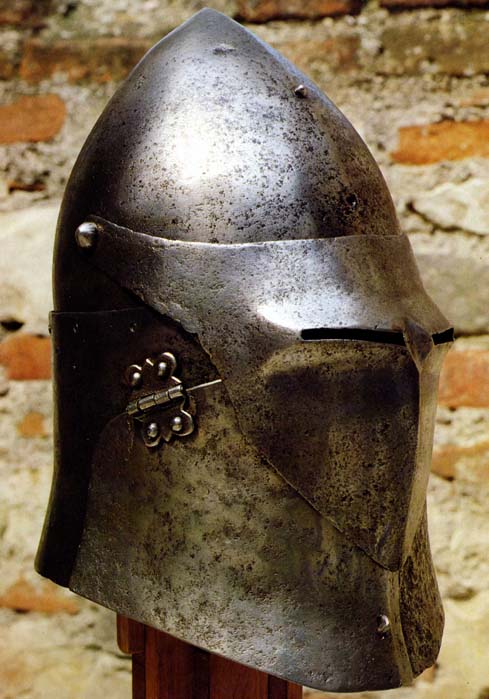
Venetian - ca. 1400- Museo Civico, Brescia
 Attachment: 36.77 KB Attachment: 36.77 KB
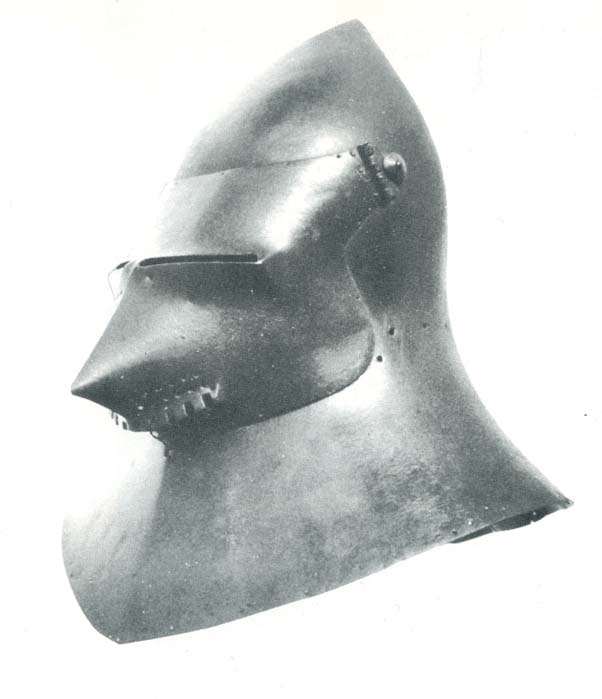
Venetian - ca. 1400 - Ducal Palace, Venice
 Attachment: 63.3 KB Attachment: 63.3 KB
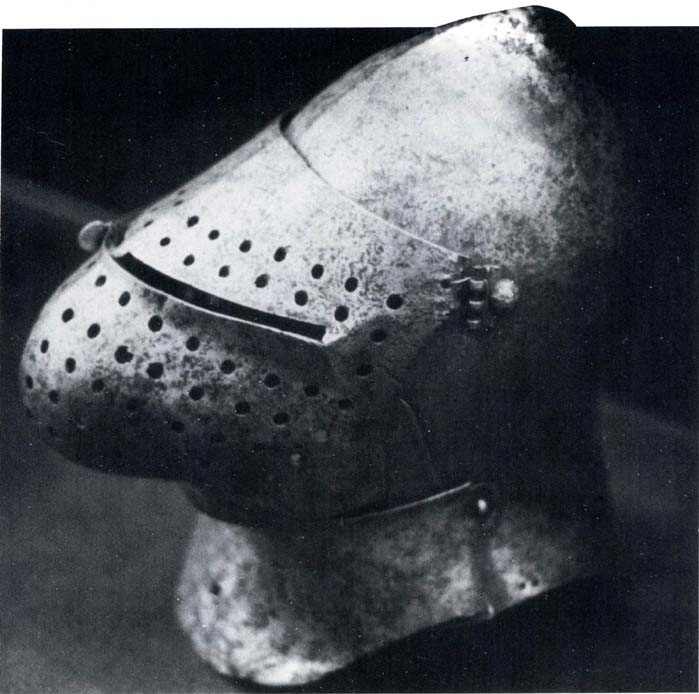
French - ca. 1400 - Musee de l'Armee, Paris
 Attachment: 51.65 KB Attachment: 51.65 KB
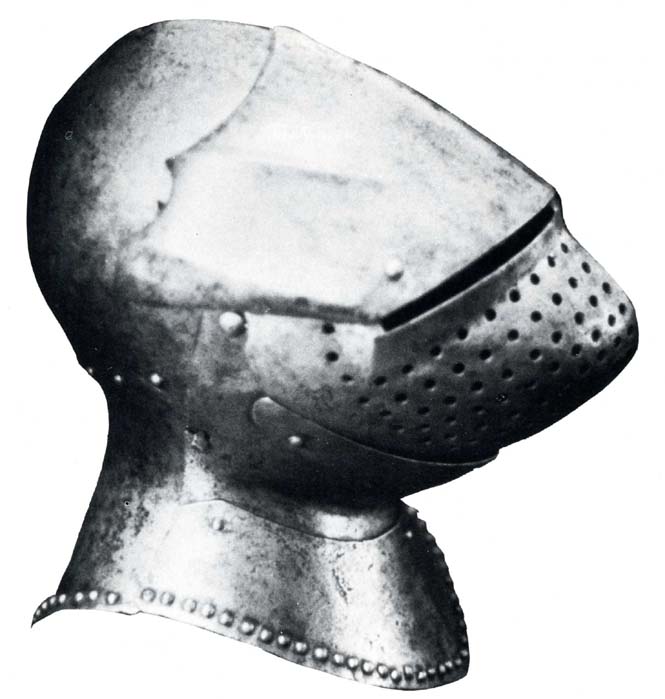
French - ca. 1400 - Musee de l'Armee, Paris
 Attachment: 60.95 KB Attachment: 60.95 KB
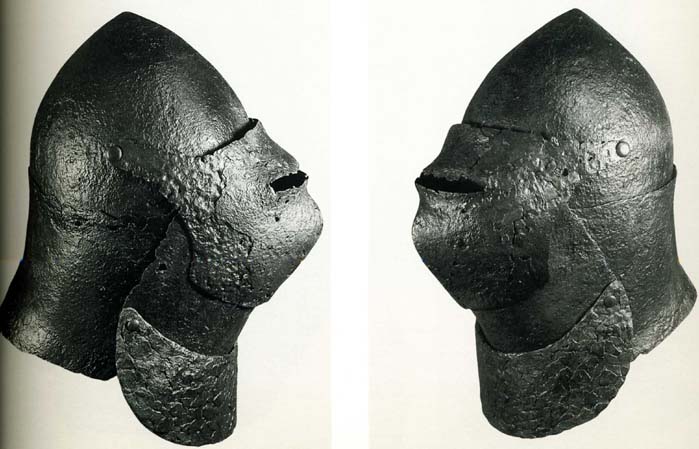
Italian - before 1415 - private collection
 Attachment: 69.76 KB Attachment: 69.76 KB
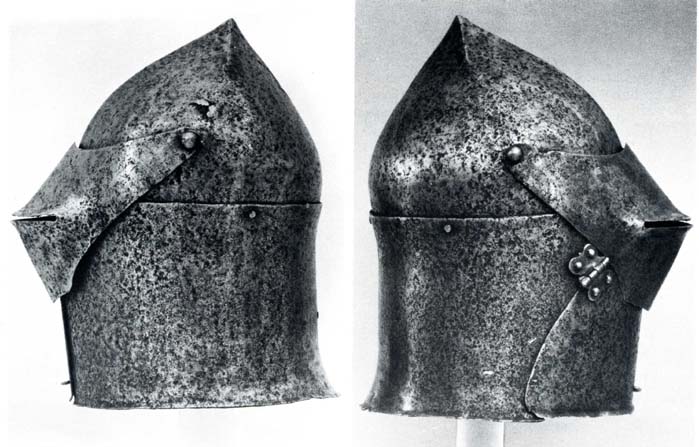
Italian - ca. 1430 - Met Museum, NY
 Attachment: 100.79 KB Attachment: 100.79 KB
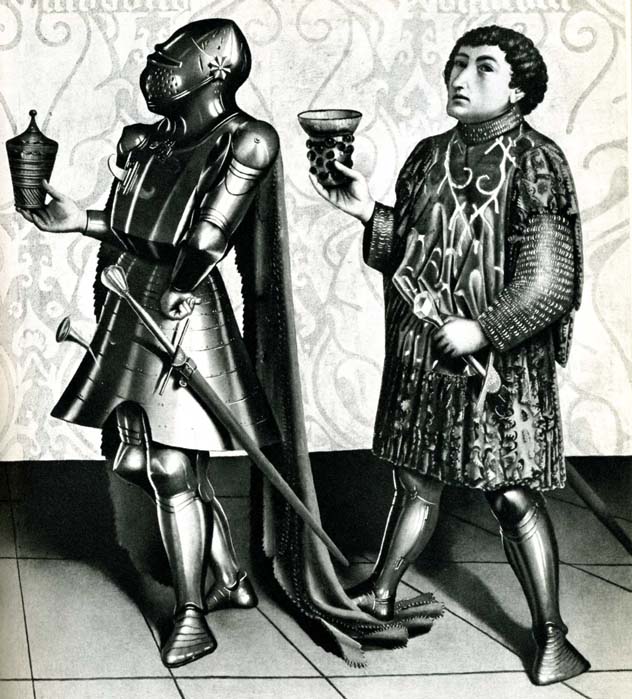
Painting by Witz, c. 1440
 Attachment: 54 KB Attachment: 54 KB
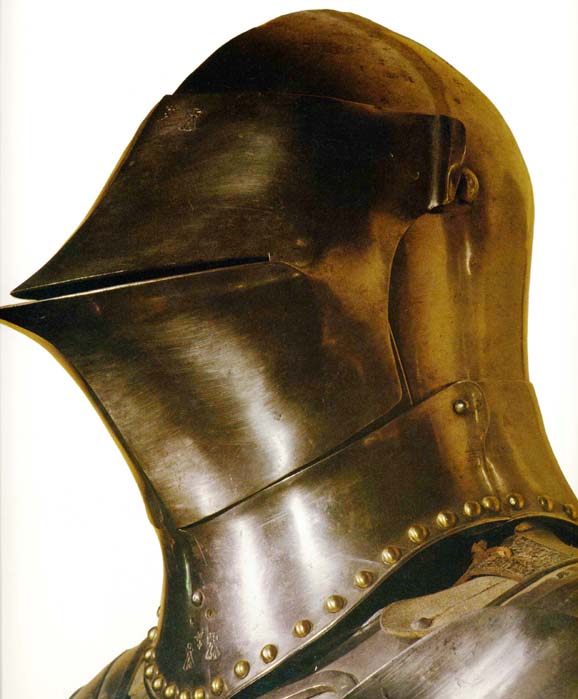
Missaglia of Milan - ca 1450 - Churburg Castle

ChadA
http://chadarnow.com/
|
|
    |
 |
Chad Arnow
myArmoury Team


|
 Posted: Sat 21 Feb, 2009 11:01 am Post subject: Posted: Sat 21 Feb, 2009 11:01 am Post subject: |
 |
|
Two more:
 Attachment: 48.9 KB Attachment: 48.9 KB
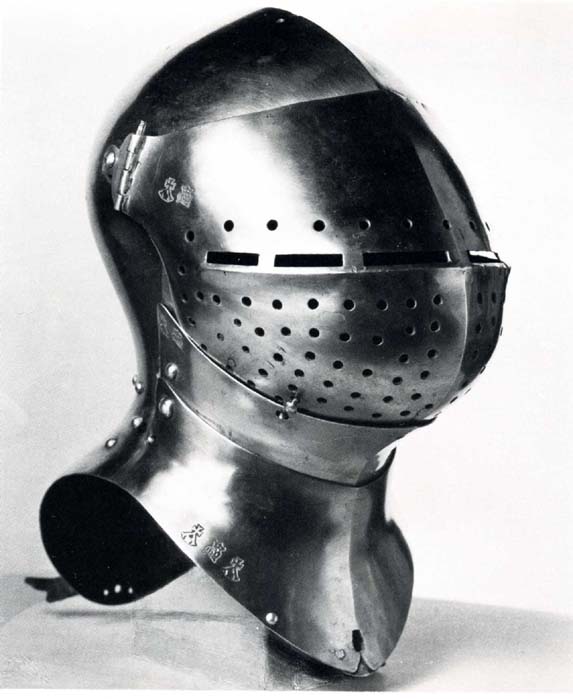
Helm of Frederick I, Italian - ca 1450 - Kunsthistorisches Museum, Vienna
 Attachment: 57.18 KB Attachment: 57.18 KB
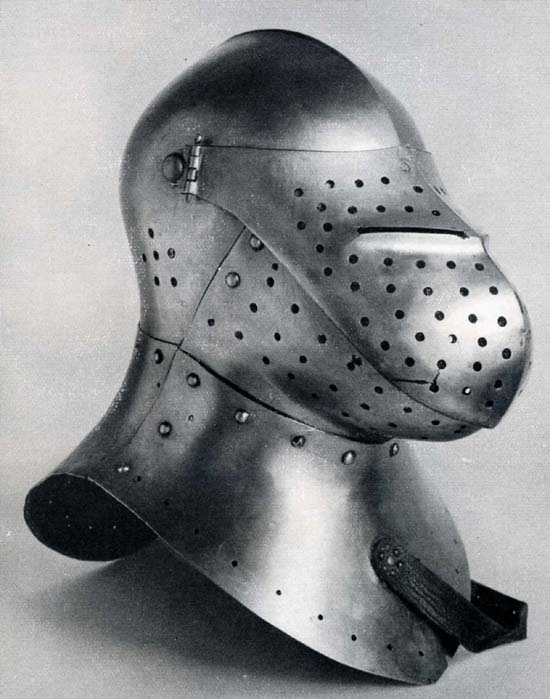
by Conrad Treytz, Innsbruck - ca 1450-60 - Historisches Museum, Bern

ChadA
http://chadarnow.com/
|
|
    |
 |
Chad Arnow
myArmoury Team


|
 Posted: Tue 24 Feb, 2009 10:47 am Post subject: Posted: Tue 24 Feb, 2009 10:47 am Post subject: |
 |
|
Anyone have any more of these type they'd like to share?
I'm also interested in more pics of the Italian one in a private collection.

ChadA
http://chadarnow.com/
|
|
    |
 |
Jody A

|
 Posted: Tue 24 Feb, 2009 11:07 am Post subject: AD 1430-40 Posted: Tue 24 Feb, 2009 11:07 am Post subject: AD 1430-40 |
 |
|
Here's one in the British Museum - found at Kordofan in Sudan, which may indicate a French origin. In the early 1450s, Jacques Coeur, silversmith to Charles VII of France (reigned 1422-61) and an important merchant, was tried for selling armour to the Khalif of Egypt (among other charges). It is possible that this bascinet may have been among the armour exported from France and thus found its way to the shores of the Nile. (G.F. Laking, A record of European arms and, 7 vols. (London, G. Bell & Sons, 1920))
 Attachment: 91.49 KB Attachment: 91.49 KB
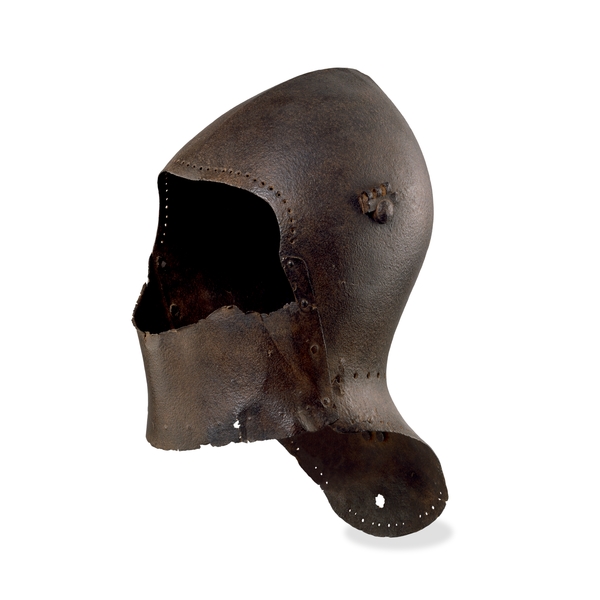
QUI FALSITATE VIVIT, ANIMAM OCCIDIT. FALSUS IN ORE, CARET HONORE.
"Who lives in falsehood slays his soul, whose speech is false, his honour".
Inscription on type XII dated 1040-60 (Records, Oakeshott)
|
|
  |
 |
Jared Smith

|
 Posted: Tue 24 Feb, 2009 8:55 pm Post subject: Posted: Tue 24 Feb, 2009 8:55 pm Post subject: |
 |
|
I am not that familiar with "plate armour" and the terminology. Are "frog mouth" helms and similar grouped as "great bascinets"? I would have guessed many of the illustrations to be specialized for tjoust.
Absence of evidence is not necessarily evidence of absence!
|
|
  |
 |
Chad Arnow
myArmoury Team


|
 Posted: Wed 25 Feb, 2009 10:28 am Post subject: Posted: Wed 25 Feb, 2009 10:28 am Post subject: |
 |
|
| Jared Smith wrote: | | I am not that familiar with "plate armour" and the terminology. Are "frog mouth" helms and similar grouped as "great bascinets"? I would have guessed many of the illustrations to be specialized for tjoust. |
True frog-mouth helms (see below) are usually seen as an outgrowth of the great helm. You can see great helms of the late 14th century and early 15th that are clearly trending toward that frog-mouthed shape.
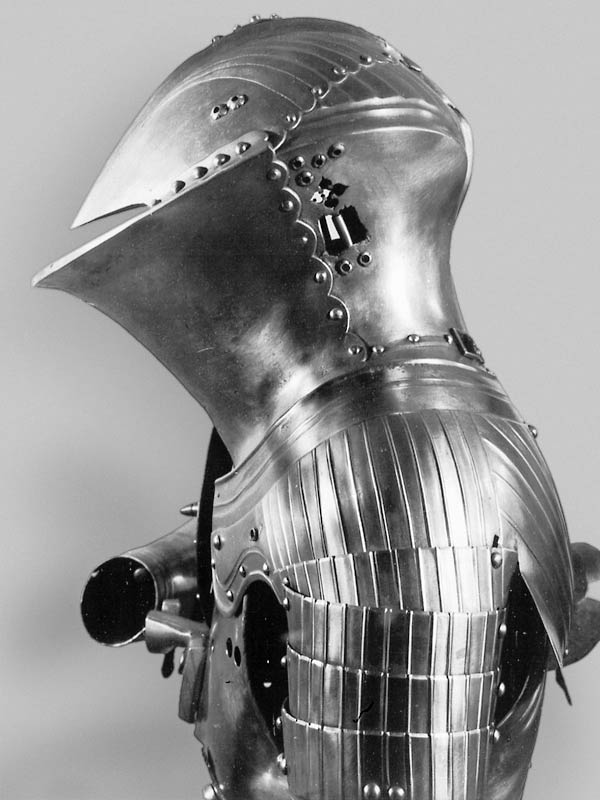
The one semi-frog-mouthed one in my first post (the one from Churburg) is a weird animal. It has a moveable visor which frog-mouth great helms typically don't. It also has a hinged bevor/chin piece like many of the other great bascinets do. But the "prow" of the helm has some of that frog-mouthed shape.
True frog-mouths are seen as tilting helms. Many associate great bascinets with foot combat in a tourney setting, though I think some of the early ones saw field use as well.

ChadA
http://chadarnow.com/
|
|
    |
 |
|
Bryan Johnson
|
 Posted: Wed 25 Feb, 2009 10:30 am Post subject: Posted: Wed 25 Feb, 2009 10:30 am Post subject: |
 |
|
Jared
Great basinets were not specifically designed for the joust. However "frog mouthed" helms were a design that appears to be specifically designed for a specific style of joust in the German states.
Bryan
Bryan Johnson
|
|
  |
 |
Chad Arnow
myArmoury Team


|
 Posted: Sat 06 Nov, 2010 8:21 am Post subject: Posted: Sat 06 Nov, 2010 8:21 am Post subject: |
 |
|
Here are two more pics. The first is another view of the Musee de l'Armee. The second, also dated to c. 1400, is from the Dijon Museum.
 Attachment: 55.3 KB Attachment: 55.3 KB
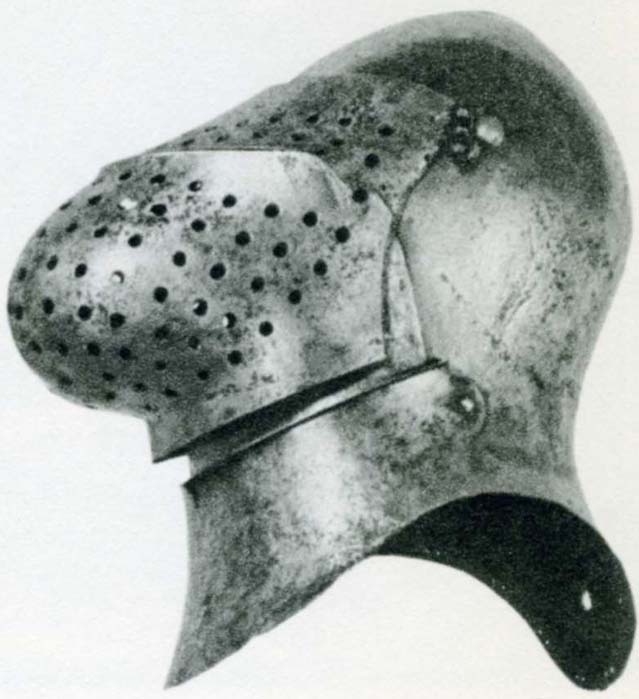
Musee de l'Armee
 Attachment: 48.21 KB Attachment: 48.21 KB
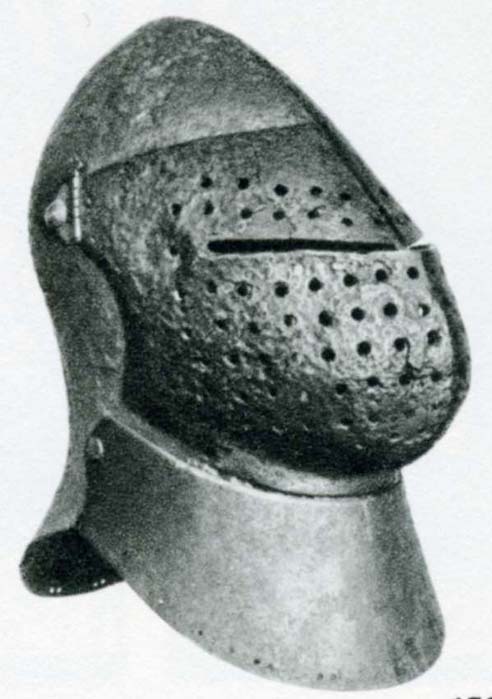
c. 1400 - Dijon Museum (gorget plate looks restored)

ChadA
http://chadarnow.com/
|
|
    |
 |
|
Gregory J. Liebau
Location: Dinuba, CA Joined: 27 Nov 2004
Posts: 669
|
 Posted: Sat 06 Nov, 2010 9:12 pm Post subject: Posted: Sat 06 Nov, 2010 9:12 pm Post subject: |
 |
|
Hi Chad,
Thanks for the thread. I'd like to add some comments regarding the great bascinets discovered in the Chalcis hoard. The first image you posted is actually what I believe to be a reproduction housed in the Museum in Brescia that is based on an original discovered in Chalcis in 1840. If it is an original, it is nonetheless attributed to Chalcis as well. What I think is the original it is based upon was (and may still be) housed in Athens at the Ethnological Museum. The similar great bascinet you show from the Met some photos down was also discovered at the same time in Chalcis. Here are photos of the original helmet in Athens and a catalog photograph from a publication about the helmets from an article about the hoard printed in 1911... I do not believe it shows all of the helmets of this style - both of those we have better photographs of here in this thread would be hard to match to those shown in this catalog image.
I did what research I could regarding this style of helmet from Chalcis some time ago and was unable to come up with a lot of information, despite my interest in them. For the unique features they possess, they have seen far too little publication.
Cheers!
-Gregory


|
|
  |
 |
Blaz Berlec

|
|
   |
 |
Iagoba Ferreira

|
 Posted: Wed 10 Nov, 2010 2:16 am Post subject: Posted: Wed 10 Nov, 2010 2:16 am Post subject: |
 |
|
There is another one, probably made by Pedro del Campo, in 1425 for the Viana's prince (the title of the son of the king of Navarra). At least there is a great bascinet from the Cathedral, and a bill stating that one was made...
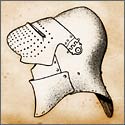
Traces of tinning survive, giving a "silvered" surface. It has been in several exhibitions, and in first person is quite huge 
|
|
  |
 |
|
|

